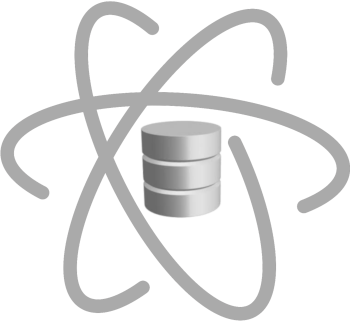 |
 |
|
|
Lab 4: Clustering
In [1]:
import pandas as pd
import matplotlib.pyplot as plt
import ds_charts as ds
data: pd.DataFrame = pd.read_csv('data/diabetes.csv')
data.pop('id')
data.pop('class')
v1 = 0
v2 = 4
N_CLUSTERS = [2, 3, 5, 7, 9, 11, 13, 15, 17, 19, 21, 23, 25, 27, 29]
rows, cols = ds.choose_grid(len(N_CLUSTERS))
K-Means
In [2]:
from sklearn.cluster import KMeans
from sklearn.metrics import silhouette_score
mse: list = []
sc: list = []
fig, axs = plt.subplots(rows, cols, figsize=(cols*5, rows*5), squeeze=False)
i, j = 0, 0
for n in range(len(N_CLUSTERS)):
k = N_CLUSTERS[n]
estimator = KMeans(n_clusters=k)
estimator.fit(data)
mse.append(estimator.inertia_)
sc.append(silhouette_score(data, estimator.labels_))
ds.plot_clusters(data, v2, v1, estimator.labels_.astype(float), estimator.cluster_centers_, k,
f'KMeans k={k}', ax=axs[i,j])
i, j = (i + 1, 0) if (n+1) % cols == 0 else (i, j + 1)
plt.show()
In [3]:
fig, ax = plt.subplots(1, 2, figsize=(6, 3), squeeze=False)
ds.plot_line(N_CLUSTERS, mse, title='KMeans MSE', xlabel='k', ylabel='MSE', ax=ax[0, 0])
ds.plot_line(N_CLUSTERS, sc, title='KMeans SC', xlabel='k', ylabel='SC', ax=ax[0, 1], percentage=True)
plt.show()
EM (Expectation-Maximization)
In [4]:
from sklearn.mixture import GaussianMixture
mse: list = []
sc: list = []
_, axs = plt.subplots(rows, cols, figsize=(cols*5, rows*5), squeeze=False)
i, j = 0, 0
for n in range(len(N_CLUSTERS)):
k = N_CLUSTERS[n]
estimator = GaussianMixture(n_components=k)
estimator.fit(data)
labels = estimator.predict(data)
mse.append(ds.compute_mse(data.values, labels, estimator.means_))
sc.append(silhouette_score(data, labels))
ds.plot_clusters(data, v2, v1, labels.astype(float), estimator.means_, k,
f'EM k={k}', ax=axs[i,j])
i, j = (i + 1, 0) if (n+1) % cols == 0 else (i, j + 1)
plt.show()
In [5]:
fig, ax = plt.subplots(1, 2, figsize=(6, 3), squeeze=False)
ds.plot_line(N_CLUSTERS, mse, title='EM MSE', xlabel='k', ylabel='MSE', ax=ax[0, 0])
ds.plot_line(N_CLUSTERS, sc, title='EM SC', xlabel='k', ylabel='SC', ax=ax[0, 1], percentage=True)
plt.show()
Density-based
EPS - studying the maximum distance impact
In [6]:
from sklearn.cluster import DBSCAN
EPS = [2.5, 5, 10, 20, 30, 40, 50, 60, 70, 80, 90, 100]
mse: list = []
sc: list = []
rows, cols = ds.choose_grid(len(EPS))
_, axs = plt.subplots(rows, cols, figsize=(cols*5, rows*5), squeeze=False)
i, j = 0, 0
for n in range(len(EPS)):
estimator = DBSCAN(eps=EPS[n], min_samples=2)
estimator.fit(data)
labels = estimator.labels_
k = len(set(labels)) - (1 if -1 in labels else 0)
if k > 1:
centers = ds.compute_centroids(data, labels)
mse.append(ds.compute_mse(data.values, labels, centers))
sc.append(silhouette_score(data, labels))
ds.plot_clusters(data, v2, v1, labels.astype(float), estimator.components_, k,
f'DBSCAN eps={EPS[n]} k={k}', ax=axs[i,j])
i, j = (i + 1, 0) if (n+1) % cols == 0 else (i, j + 1)
else:
mse.append(0)
sc.append(0)
plt.show()
In [7]:
fig, ax = plt.subplots(1, 2, figsize=(6, 3), squeeze=False)
ds.plot_line(EPS, mse, title='DBSCAN MSE', xlabel='eps', ylabel='MSE', ax=ax[0, 0])
ds.plot_line(EPS, sc, title='DBSCAN SC', xlabel='eps', ylabel='SC', ax=ax[0, 1], percentage=True)
plt.show()
Metric
In [8]:
import numpy as np
from scipy.spatial.distance import pdist, squareform
METRICS = ['euclidean', 'cityblock', 'chebyshev', 'cosine', 'jaccard']
distances = []
for m in METRICS:
dist = np.mean(np.mean(squareform(pdist(data.values, metric=m))))
distances.append(dist)
print('AVG distances among records', distances)
distances[0] *= 0.6
distances[1] = 80
distances[2] *= 0.6
distances[3] *= 0.1
distances[4] *= 0.15
print('CHOSEN EPS', distances)
In [9]:
mse: list = []
sc: list = []
rows, cols = ds.choose_grid(len(METRICS))
_, axs = plt.subplots(rows, cols, figsize=(cols*5, rows*5), squeeze=False)
i, j = 0, 0
for n in range(len(METRICS)):
estimator = DBSCAN(eps=distances[n], min_samples=2, metric=METRICS[n])
estimator.fit(data)
labels = estimator.labels_
k = len(set(labels)) - (1 if -1 in labels else 0)
if k > 1:
centers = ds.compute_centroids(data, labels)
mse.append(ds.compute_mse(data.values, labels, centers))
sc.append(silhouette_score(data, labels))
ds.plot_clusters(data, v2, v1, labels.astype(float), estimator.components_, k,
f'DBSCAN metric={METRICS[n]} eps={distances[n]:.2f} k={k}', ax=axs[i,j])
else:
mse.append(0)
sc.append(0)
i, j = (i + 1, 0) if (n+1) % cols == 0 else (i, j + 1)
plt.show()
In [10]:
fig, ax = plt.subplots(1, 2, figsize=(6, 3), squeeze=False)
ds.bar_chart(METRICS, mse, title='DBSCAN MSE', xlabel='metric', ylabel='MSE', ax=ax[0, 0])
ds.bar_chart(METRICS, sc, title='DBSCAN SC', xlabel='metric', ylabel='SC', ax=ax[0, 1], percentage=True)
plt.show()
Hierarchical
In [11]:
from sklearn.cluster import AgglomerativeClustering
mse: list = []
sc: list = []
rows, cols = ds.choose_grid(len(N_CLUSTERS))
_, axs = plt.subplots(rows, cols, figsize=(cols*5, rows*5), squeeze=False)
i, j = 0, 0
for n in range(len(N_CLUSTERS)):
k = N_CLUSTERS[n]
estimator = AgglomerativeClustering(n_clusters=k)
estimator.fit(data)
labels = estimator.labels_
centers = ds.compute_centroids(data, labels)
mse.append(ds.compute_mse(data.values, labels, centers))
sc.append(silhouette_score(data, labels))
ds.plot_clusters(data, v2, v1, labels, centers, k,
f'Hierarchical k={k}', ax=axs[i,j])
i, j = (i + 1, 0) if (n+1) % cols == 0 else (i, j + 1)
plt.show()
In [12]:
fig, ax = plt.subplots(1, 2, figsize=(6, 3), squeeze=False)
ds.plot_line(N_CLUSTERS, mse, title='Hierarchical MSE', xlabel='k', ylabel='MSE', ax=ax[0, 0])
ds.plot_line(N_CLUSTERS, sc, title='Hierarchical SC', xlabel='k', ylabel='SC', ax=ax[0, 1], percentage=True)
plt.show()
In [13]:
METRICS = ['euclidean', 'cityblock', 'chebyshev', 'cosine', 'jaccard']
LINKS = ['complete', 'average']
k = 3
values_mse = {}
values_sc = {}
rows = len(METRICS)
cols = len(LINKS)
_, axs = plt.subplots(rows, cols, figsize=(cols*5, rows*5), squeeze=False)
for i in range(len(METRICS)):
mse: list = []
sc: list = []
m = METRICS[i]
for j in range(len(LINKS)):
link = LINKS[j]
estimator = AgglomerativeClustering(n_clusters=k, linkage=link, affinity=m )
estimator.fit(data)
labels = estimator.labels_
centers = ds.compute_centroids(data, labels)
mse.append(ds.compute_mse(data.values, labels, centers))
sc.append(silhouette_score(data, labels))
ds.plot_clusters(data, v2, v1, labels, centers, k,
f'Hierarchical k={k} metric={m} link={link}', ax=axs[i,j])
values_mse[m] = mse
values_sc[m] = sc
plt.show()
In [14]:
_, ax = plt.subplots(1, 2, figsize=(6, 3), squeeze=False)
ds.multiple_bar_chart(LINKS, values_mse, title=f'Hierarchical MSE', xlabel='metric', ylabel='MSE', ax=ax[0, 0])
ds.multiple_bar_chart(LINKS, values_sc, title=f'Hierarchical SC', xlabel='metric', ylabel='SC', ax=ax[0, 1], percentage=True)
plt.show()



